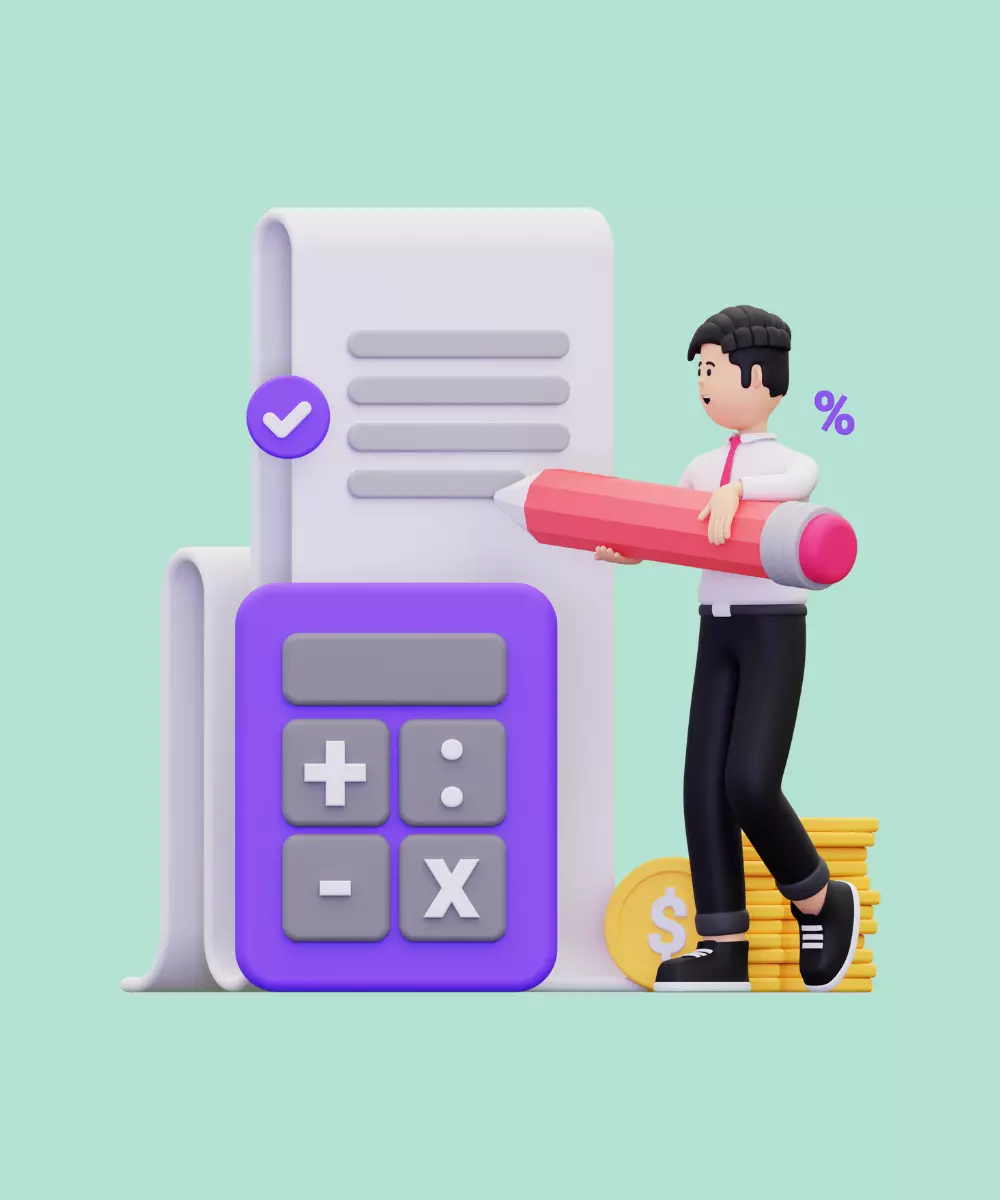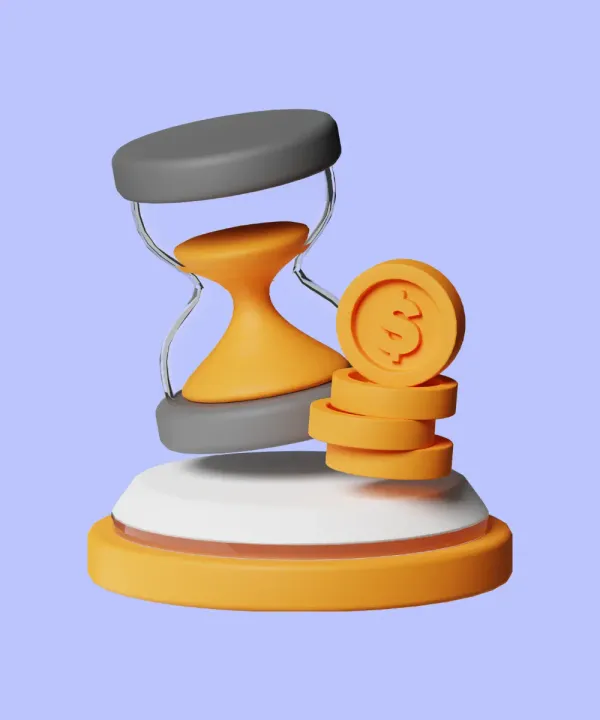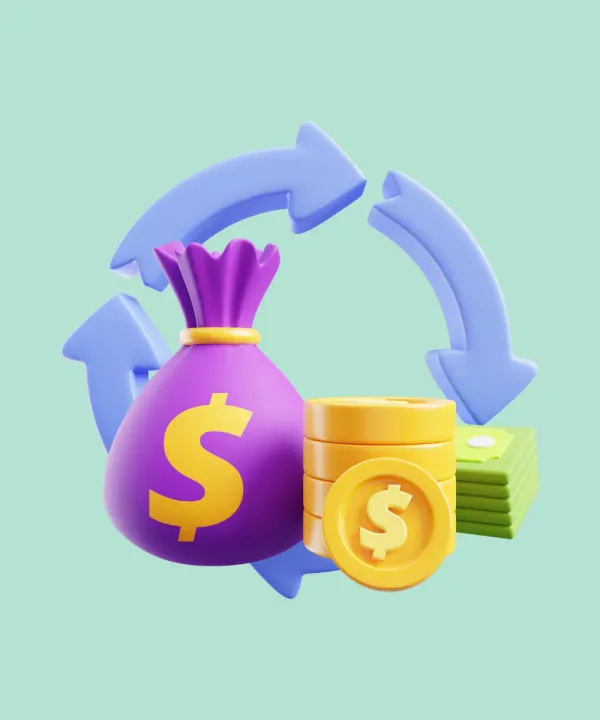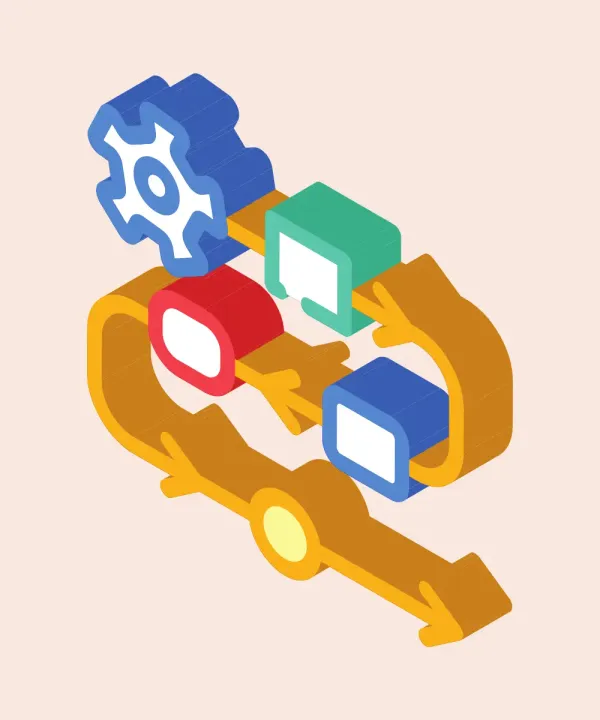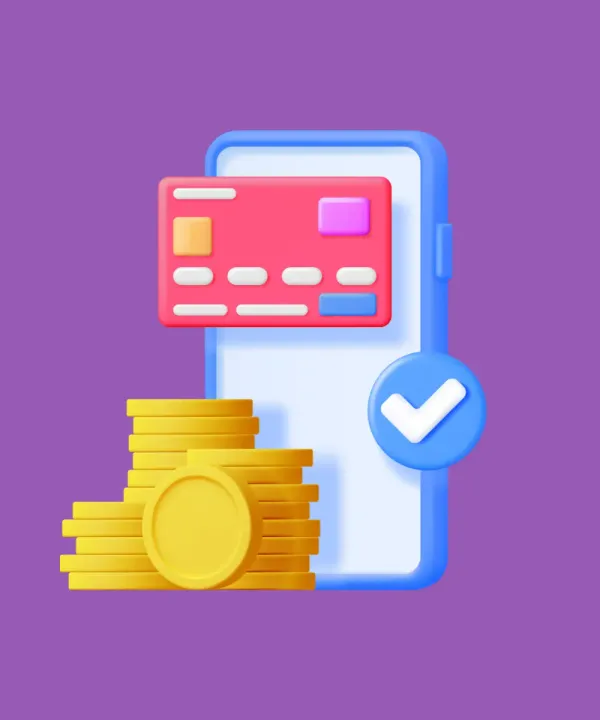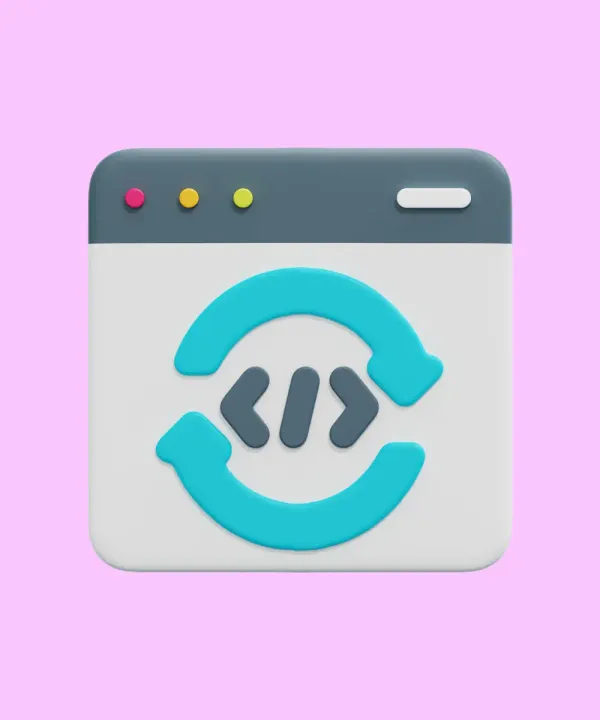From data gathered by Statista, it's clear that Flutter continues to stand out as a preferred choice among the cross-platform frameworks. This robust demand helps us in approximating the potential costs tied to software development. To cut a long story short, the expenses associated with developing a Flutter app can fall anywhere between $10,000 to $200,000 and above. This estimate stems from our personal experience as a leading IT service provider specializing in cross-platform app development.
We are here to guide you through this. In this comprehensive guide, we'll break down the various cost factors, calculate Flutter app development cost, consider additional constituents, and provide essential tips to cut down your Flutter app development cost.
How to Calculate Flutter App Development Cost
Flutter app development goes through several phases, each affecting the total cost.
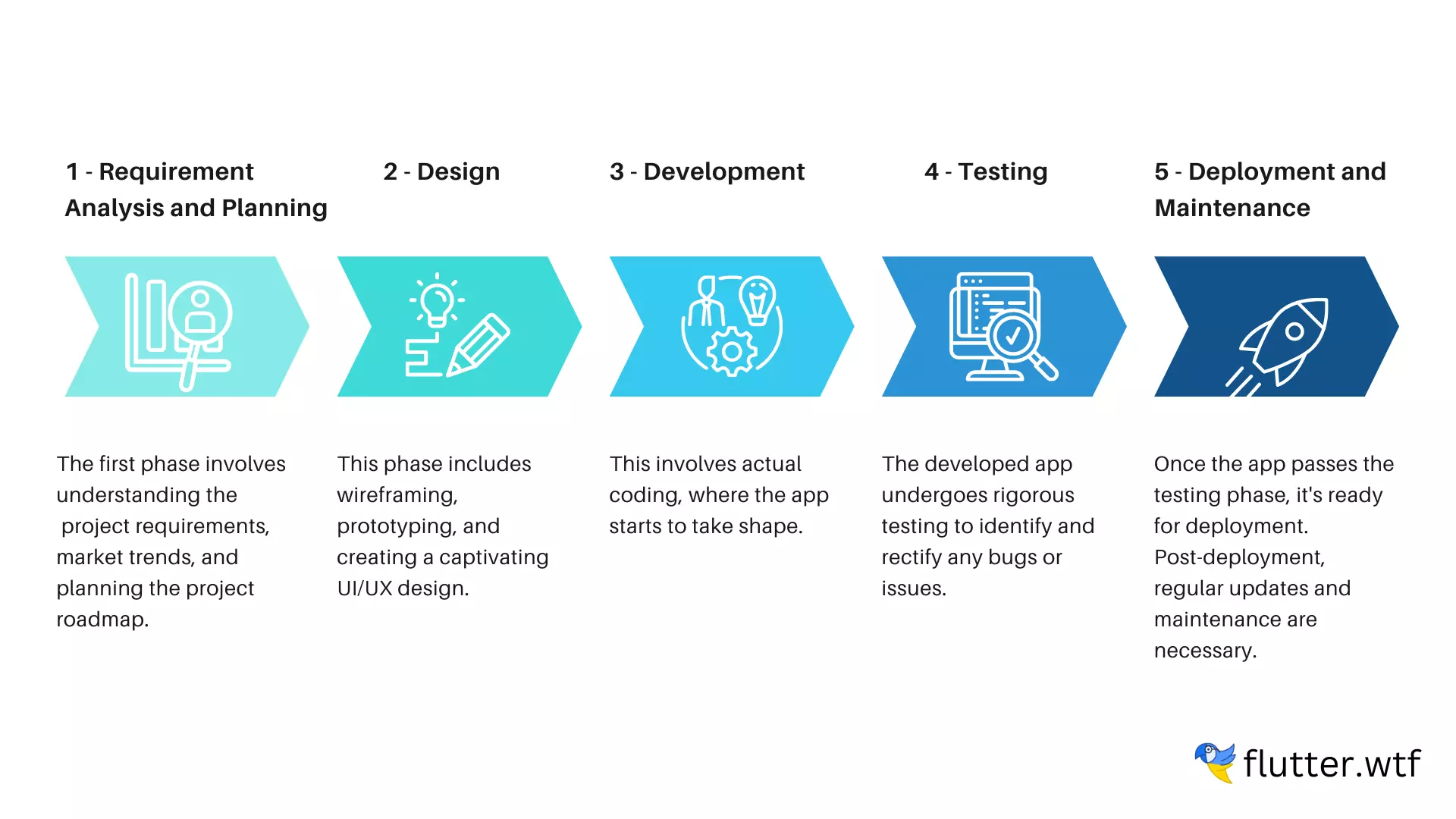
Estimating the cost of a Flutter app development project involves considering the all factors and calculating the total hours required for each. The overall cost is typically estimated by multiplying the total hours by the developers' hourly rates.
Factors that Impact Flutter App Development Cost
When considering building a mobile app with Flutter, understanding the cost implications is crucial. The cost of Flutter app development can vary significantly depending on several factors, each of which can directly impact the project's budget and timeline.
The final price tag can be influenced by a range of factors like the scope of the project, level of app's complexity, the total number of features to be incorporated, the hourly rates of developers, among many other aspects. This guide will help you discover the factors that impact the cost of Flutter app development.
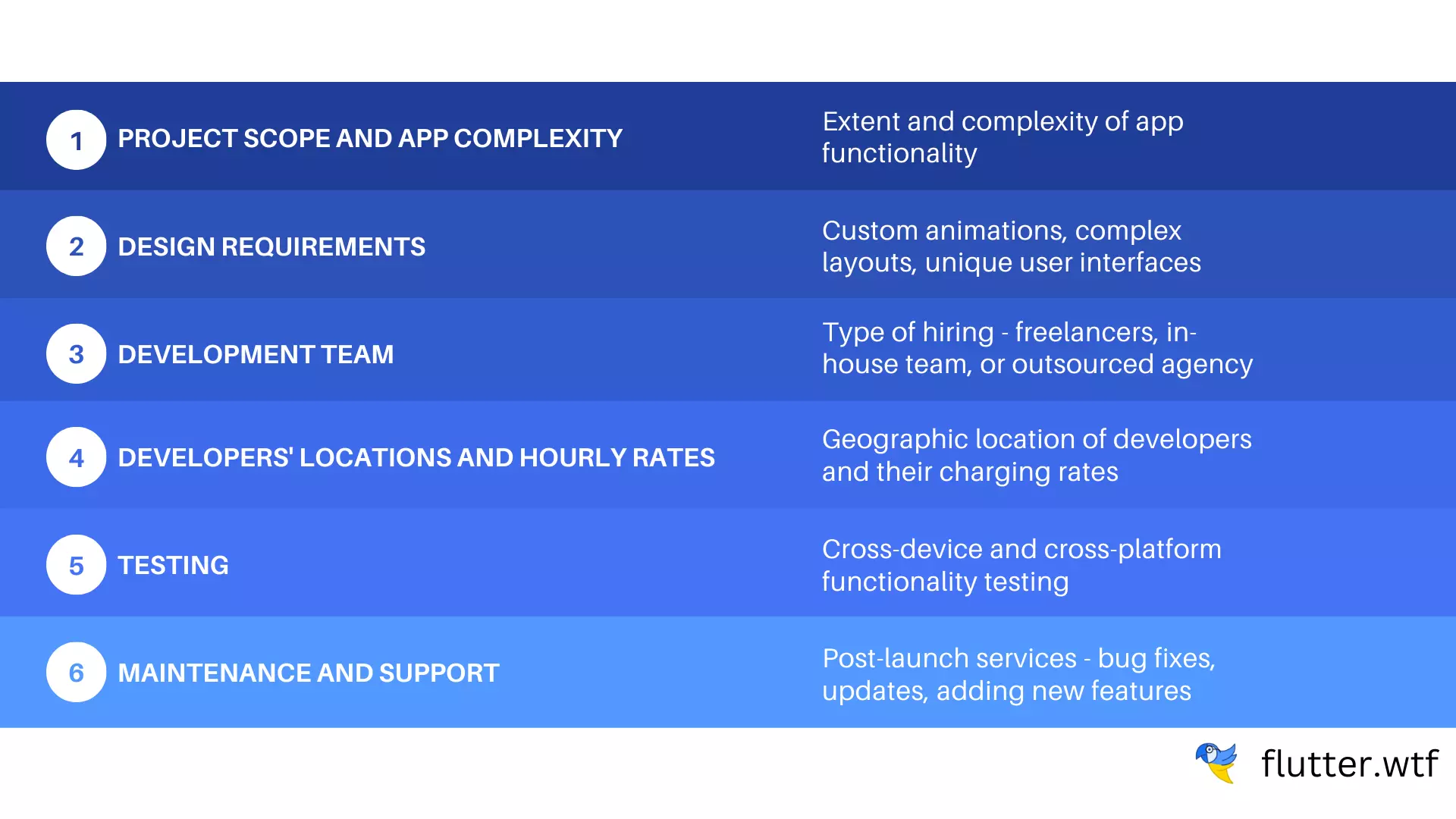
Project scope and app complexity
The scope of your project is a primary determinant of the development cost. It includes the number of features and functionalities that you want in your app. An app with multiple features and complex functionalities will consume more development time, impacting the cost. This could involve integrating advanced technologies such as AI, VR, or blockchain, each requiring specialized skills and thereby increasing costs.
Simple apps with basic functionality like a login and a simple UI will cost less. For example, a basic note-taking app will be much cheaper to develop than a fully-featured e-commerce platform. Hence, defining the project scope and app complexity in the initial stages of app development is crucial for estimating the overall cost.
Design requirements
A high-quality UI/UX design is crucial for app success, but it also affects the cost. A simple, minimalist design will cost less than a complex, custom design with unique graphics and animations. If you require a highly customized design or want to implement specific branding elements, it will increase your app development cost. Depending on the complexity of your app, design may take from 40 to 90+ hours.
So, what exactly contributes to the cost of Flutter app design?
- Pre-Design Activities: These include market research, analysis of current trends, and identifying the optimal criteria for the future design of the Flutter solution. The time and cost for this stage can vary based on the specific business niche and available resources for research. You can expect to spend roughly $500-$700 for these preliminary activities.
- Initial UI/UX Design Preparation: This stage involves creating sketches and wireframes. The time required and the cost incurred for this stage depends on the complexity of the design. Creating sketches and wireframes can demand a budget allocation ranging from $200 to $1000.
- Creation of UI/UX Design Visuals: This phase involves the development of a mood board and the creation of mockups. Again, the actual time required depends on the complexity of the app. The budget for this stage can range anywhere from $5,000 to $10,000 or more.
- Brand Identity Design: In this phase, UI/UX designers develop logos, icons, and other design elements in line with your brand's color scheme. This activity requires a considerable budget, potentially anywhere from $5,000 to $10,000 or more.
- Animation Preparation: During this phase, UI/UX designers focus on screen and content visualization. The cost for this part is difficult to estimate as it depends on the extent of animated imagery required.
Development team
The composition of your development team also impacts the cost. Hiring a team of experienced professionals might cost more upfront, but their expertise could lead to better efficiency and a higher-quality end product. On the other hand, hiring less experienced developers might save money initially but could result in longer development times or potential issues down the road.
Freelance
This route is often explored due to its potential for cost reduction. However, when it comes to Flutter app development, you may encounter uncertainty regarding the freelancer's skills and quality of work. Additionally, freelancers might not be the most reliable choice for support, maintenance, and updates, as they could move onto other projects, making sustained collaboration challenging.
In-house teams
With this approach, you manage the project development and are accountable for finding and vetting potential employees. Building an in-house team also entails additional expenditures such as procuring hardware, leasing office space, and accounting for sick leaves, salaries, among others. These conditions can significantly inflate the overall cost.
Outsourcing companies
When you outsource your project, you entrust it to a pre-established team of specialists with a proven track record and comprehensive skills. This method is a fantastic way to conserve development funds without compromising product quality. Besides the financial advantage, outsourcing provides several other benefits.
Developers' locations and hourly rates
Developers' geographic locations significantly influence the cost. For instance, developers in North America generally charge higher rates compared to developers in Eastern Europe or Asia. Also, the cost model you choose, whether it's a fixed price, time and material, or a dedicated team model, will also affect the overall cost.
In the table below you can find developers' hourly rates and compare them with each other:
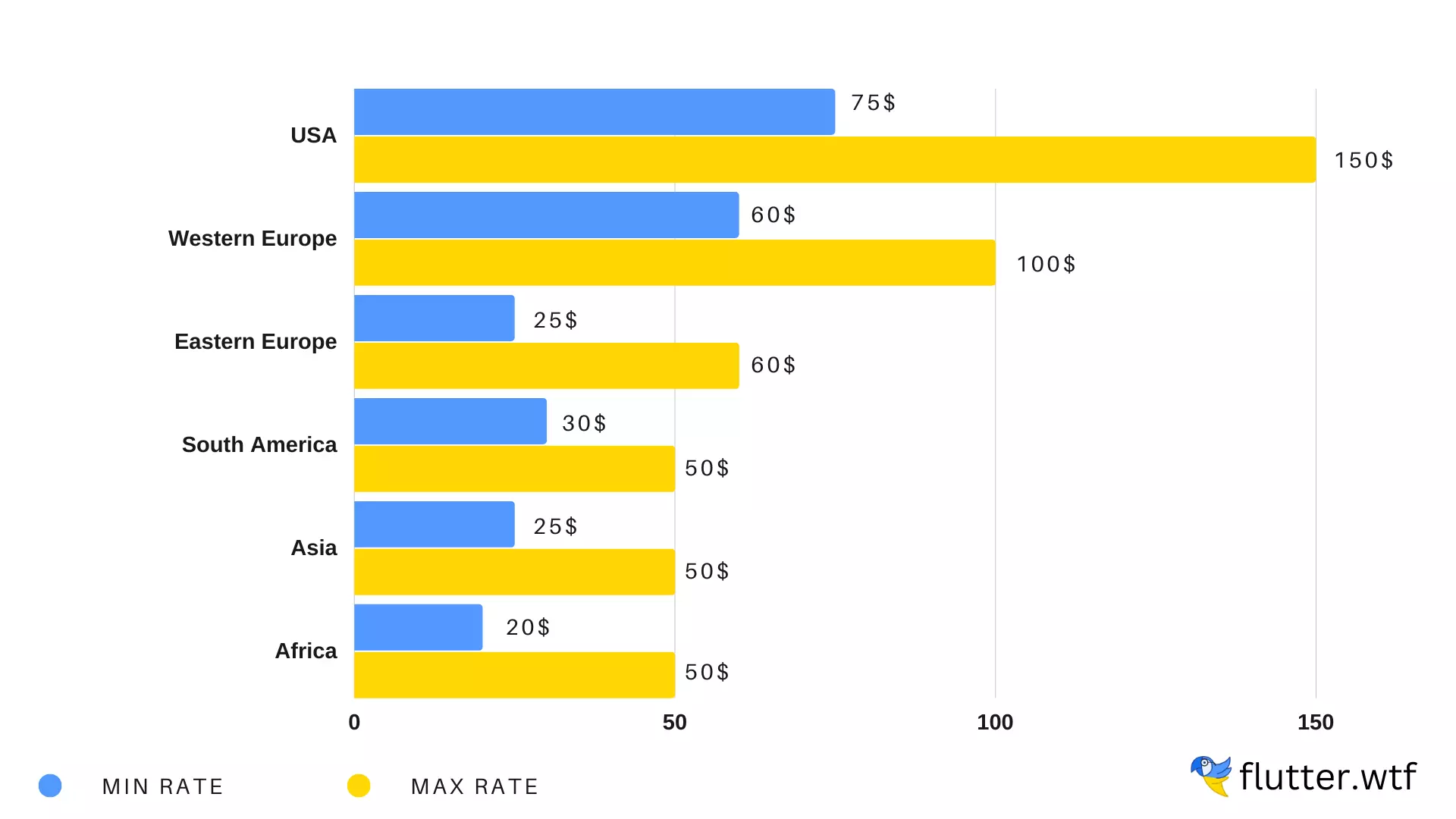
Testing
Testing is a crucial part of app development that ensures the app works as intended. It includes various types of testing like functional testing, usability testing, performance testing, and security testing. The more extensive the testing required, the higher the cost will be. However, investing in thorough testing can save costs in the long run by preventing critical issues that could affect the app's performance or user experience.
Maintenance and support
Developing a mobile app is not a sprint, it's more likely a marathon. It's a journey that continues even after the app's initial launch. Regular updates, bug fixes, and design enhancements are just the top of the iceberg when it comes to maintaining an app. Think of your Flutter app as a living entity that requires ongoing care to stay relevant and ensure a seamless user experience.
What budget should I plan to maintain the app in the future?
It is really essential to account for future support in your budget, ideally setting aside an additional 15-20% of the total cost.
Additional Constituents to Consider
As we've already said, your app needs to be maintained and updated in order to stay successful on the market.
Let's talk about these expenses.
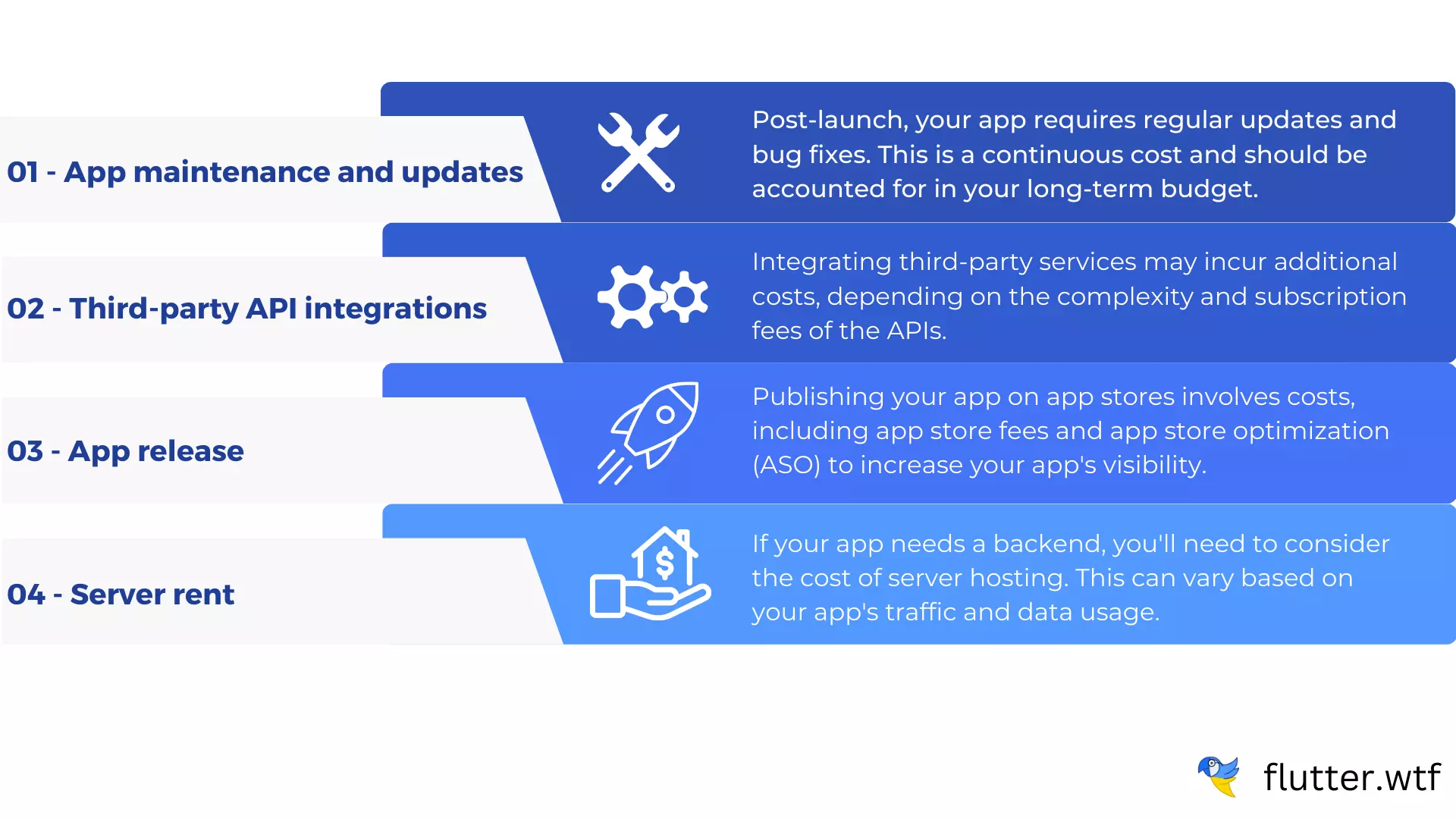
App maintenance and updates
Maintaining a high-performing app requires constant upgrades and new features. Without these, even the best app will stagnate and lose users. Ideally, the original development team should maintain the app due to their familiarity with the code. If that's not possible, detailed documentation can facilitate the process for new developers. While updates can cost more than the initial development over a period, they are a worthwhile investment as long as the app continues to generate revenue.
New features may introduce bugs and vulnerabilities. Ignoring these can degrade user experience and create security risks. Hence, consider investing in post-release support services, which include feature development, testing, and bug fixes.
Here, at What the Flutter, we excel in providing post-release support and managing projects developed elsewhere. Our experience confirms that it's simpler and more cost-effective to maintain a project we developed, as we can avoid the complexities of understanding someone else's code.
Third-party API integrations
Third-party API integrations play a crucial role in the functionality of complex apps, allowing seamless data exchange between different solutions. While initial integration may involve cost-effective APIs, increased usage often necessitates an upgrade to more sophisticated APIs. Thus, the extent of integrations can influence the overall cost of a Flutter app.
App store release
Launching your finished product involves releasing it on major platforms like Google Play and the App Store. However, these platforms impose release fees: a one-time $25 fee for Google Play and an annual $99 fee for the Apple Store. Additionally, both platforms deduct a fee from in-app purchases or subscriptions.
How much can an App store release cost?
Apple charges a 30% fee for apps and in-app purchases. However, the fee doesn't apply to free apps. Subscriptions are charged at 30% for the first year, which then drops to 15% for subsequent years. Developers can also apply for the App Store Small Business Program. Under this scheme, if your business makes $1M (USD) or less in a year, you qualify for a reduction of the fee to 15%. Once your business income surpasses this threshold in a given year, the standard 30% rate applies for the rest of the year. However, if your income drops below $1M (USD), you can re-qualify for the scheme the following year.
Google Play has exactly the same charging scheme. 15% for the first $1M (USD) revenue earned by the developer each year. 30% for earnings in excess of $1M (USD) revenue earned by the developer each year.
Our extensive experience in releasing apps suggests that this stage can take 10-40 hours, depending on the number of platforms. At a rate of $30 per hour, this equates to $300-$1,200.
Remember that these are estimated ranges and can vary based on a number of factors, including the complexity of your app, the volume of submissions the app stores are dealing with at a given time, and whether your app has any issues that need to be addressed during the review process.
Server space
Creating a mobile app requires more than just frontend coding. You also need a backend for handling requests and a database for storing data. Firebase, a Backend-as-a-Service, can handle these tasks, freeing you to focus on the app itself.
Let's estimate the cost for both scenarios:
Traditional development (without firebase)
To build a backend and database, you usually need a team that consists of backend developers and a database administrator at the least. Other roles might be required depending on the complexity of the project like DevOps engineer, security specialist, etc.
Here are some general assumptions:
- Backend Developer: $50/hour
- DevOps engineer (optional): $55/hour
- Cloud hosting (e.g., AWS, Azure): $10 - $1000/month
Firebase solution
With Firebase, you only need mobile app developers as Firebase provides backend and database solutions.
Assumptions:
- Mobile App Developer: $50/hour
- Firebase services: $0 - $1000/month ( The free tier is quite generous but if your app scales, you could end up paying from $25/month for the "Blaze" pay-as-you-go plan, up to thousands per month for high-scale applications)
While Firebase is often faster and cheaper, it's not always suitable, especially for apps with unique backend needs or large scale. Conversely, a custom backend offers more control but tends to be costlier and more time-consuming. Consider your needs, budget, and timeline when choosing. You can check our article on Why Firebase is the Best Choice for MVP Development.
How to Reduce the Flutter App Development Cost
Flutter app development costs can quickly increase and exceed your budget if not handled correctly. So, how can you ensure a top-notch Flutter app while staying within budget? Here are some strategies to get you started.
Outsource your project
This model allows you to tap into a global talent pool, often obtaining services at rates that are more competitive than hiring in-house or local talent. Additionally, it alleviates the need for office space and equipment, and reduces overheads related to employee benefits and perks.
A well-chosen outsourcing partner, like What the Flutter, will understand your business needs, provide expert solutions, and deliver high-quality work in a cost-efficient manner.
Start with MVP development
An MVP, or Minimum Viable Product, is a version of your app with just enough features to satisfy early customers and provide feedback for future development. By focusing on core functionalities, you can save costs and get your app to market quicker. This approach not only allows you to validate your app idea with real users but also helps to prevent spending on features that might not be necessary or popular among users. Once the MVP is successful, you can gradually add more features based on user feedback and demand.
Set clear project requirements
Clearly defining the scope and requirements of your project from the onset can help avoid misunderstandings, reduce the number of revisions, and prevent scope creep, all of which can add to development costs. By providing a clear brief, you enable the development team to understand your vision, set accurate timelines, and provide a more precise cost estimate.
Minimize your app functionalities
While having numerous features might seem appealing, each additional functionality adds complexity and costs to the development process. To keep costs down, focus on incorporating key features that directly contribute to the user experience and the app's overall purpose. Remember, simplicity and ease of use often drive user engagement more than a long list of features.
Focus on Agile approach
By prioritizing tasks, frequently reassessing, and adjusting project goals, the agile methodology helps to avoid waste, reduce risks, and deliver a product that meets user expectations. In the long run, this approach can reduce your app development cost by ensuring the team only spends time and resources on features that offer value.
Flutter Pricing Estimation at What the Flutter
The primary phase of our evaluation process hinges on the information we receive from our clients. If, alongside your app idea, you provide detailed documentation, our estimation time will be reduced, paving the way for a swift transition to the next stages. Moreover, this situation allows for a more precise cost assessment.
Conversely, if you initially lack detailed information, the estimation process may be lengthy and the outcome less accurate. Despite these scenarios, our team always incorporates potential risks during the estimation process.
Hence, our project evaluation depends on the specificity of your requirements. We ask numerous questions to ensure our estimate is as accurate as possible. This requirement-clarification stage often takes a substantial amount of time and extends over a considerable period. To account for potential risks and misinterpretations, we provide both lower and upper cost limits in our estimates. Unfortunately, it's impossible to predict every aspect in the requirements, but this method helps manage expectations on both sides.
Conclusion
Understanding the cost of Flutter app development is essential for your project's success. It allows you to budget appropriately and set realistic expectations.
Regarding the cost, it's important to emphasize here that the ultimate price tag is intricately tied to the complexity of your app. While it is possible to create an app for as low as $100 by using readily available options, it's not typically our primary approach. We specialize in the development of custom applications, which necessitate a substantial amount of time due to their unique requirements and custom features. As a result, the final cost of these custom-built apps tends to be higher.
However, it's crucial to understand the underlying factors driving these costs and why you might find a higher-priced, custom-built application a necessary investment. The expense of an application development project largely depends on the complexity and functionality required. Custom-built applications, while more expensive, are uniquely designed to meet specific needs, offering a level of customization and functionality that cannot be achieved with ready-made, less costly options.
To illustrate this with concrete numbers, consider the following Flutter app development cost estimations:
- For a basic app with simple features - such as a fitness app providing workout suggestions, meal plans, personal profiles, and a weight diary - the estimated development cost starts around $10,000.
- A medium-complexity app, like a messenger with voice call capabilities, is expected to cost around $20,000.
- High-complexity apps, comparable to platforms like Instagram, can start from $60,000 and increase significantly depending on the specific features and functionalities required.
While readily available options might seem financially attractive initially, they often offer limited functionality, which can impact the user experience and may not fulfill all your business needs. For instance, your app may require specific integrations, advanced analytics, or unique features not available in off-the-shelf solutions. In such cases, investing in a custom application becomes a strategic decision, ensuring your app can grow and evolve with your business while providing the best possible experience for your users.
Remember, the right app can provide substantial returns on investment through user engagement, customer loyalty, and revenue generation. So, it's often worthwhile to invest in a high-quality, custom-built application tailored to your specific needs, even if the upfront cost seems high.
If you're ready to turn your innovative app idea into reality, reach out to us today. Let’s together build an exceptional Flutter app that’s worth every penny of your investment.
Disclaimer: The figures provided in this article are hypothetical and can vary depending on the specific project requirements.
Frequently Asked Questions:
- How much does Flutter app development cost in general in 2024?
The total Flutter app development price may vary from $10,000 to $200,000.
- How much does it cost to hire a Flutter app developer in 2024?
The price depends on the developer's experience and location, it may vary from 20-150$/h.
- Does Flutter reduce the cost of application development?
Flutter app development comes with a number of cost-saving factors like low developmental effort, single codebase, low maintenance timeline, location etc. All these come together to get its cost range down to a huge extent.
- Is Flutter a good idea for every app?
Flutter is universal enough to facilitate the development of any type of application. The success of the project largely depends on the expertise and dedication of your development team. However, we generally recommend opting for apps with low to medium complexity when choosing Flutter. This strategy minimizes development efforts and accelerates the time to market, providing a competitive edge.
- Why choose the Flutter platform over others?
Several factors make Flutter an excellent choice for app development, but as Flutter app developers, we believe there are two standout reasons. First is the powerful backing from Google, and second is the robust set of widgets that provide a native-like feel to your applications.

